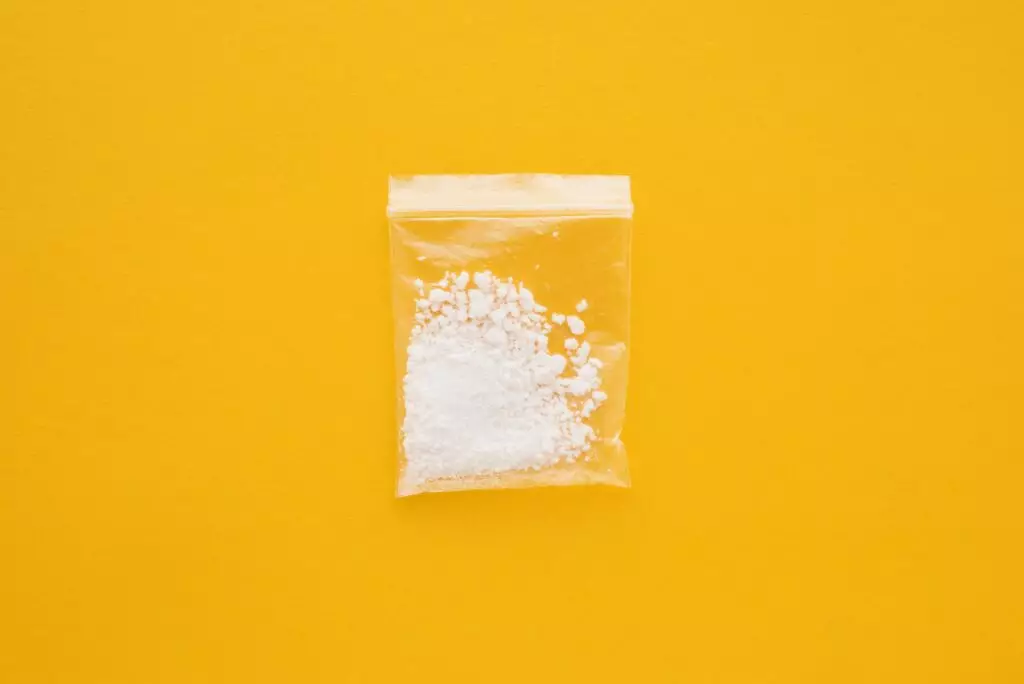Although there are many signs of crack use, dramatically increased energy levels and noticeable facial changes are common red flags. Drug paraphernalia and a distinctive, unpleasant odor are also signs of a person using crack.
What is Crack and How Is It Different From Cocaine?
Although crack and cocaine are both derived from the cocoa plant, cocaine is the drug in a powdered form. To make crack, cocaine powder is mixed with water and another substance, typically baking soda. The mixture is boiled, solidified, and broken into small, uneven chunks that pop and crackle when hot.
Cocaine is usually snorted. While crack can be injected, it is typically smoked or inhaled. Both are dangerous, highly addictive drugs that ravage the mind and body very quickly, and both can lead to many serious effects, including stroke, seizures, and cardiac arrest.
Although crack is substantially less expensive than regular cocaine, it becomes very costly when the brain becomes accustomed (or tolerant) to the drug and increasingly larger doses of crack are needed to achieve the desired high.
3 Common Signs of Crack Cocaine Use
We’ve talked about the three common signs cocaine use, but there are also three common signs of a person using crack that are easy to recognize:
1. Changes in Energy Level
Crack belongs to a class of drugs known as stimulants, which includes illegal drugs such as meth, ecstasy, and cocaine. Legal stimulants include prescription medications like Dexedrine, Adderall, and Ritalin, as well as tobacco, energy drinks, and caffeine.
All stimulants dramatically increase energy levels and bring on behavioral changes such as hyperactivity, increased alertness, and nervousness. A surplus of energy may cause unusual shaking or fidgeting.
A person under the influence of crack may be more talkative than usual, and speech may be fast or rambling. Increased energy can also show up as irritability, anger, volatile changes in mood, and unpredictable, erratic or bizarre behavior.
2. Physical Signs of Crack Use: Facial Changes
General changes may seem relatively insignificant at first, but regular or long-term crack cocaine users may look puffy and bloated, or they may look pale, haggard, or emaciated due to rapid weight loss, poor nutrition, and lack of sleep. It’s common for regular users of crack to appear sick, worn out, and much older than their years.
Dilated pupils are one of the most common physical signs of crack use, but you may also notice:
- Puffiness
- Muscle twitches and facial tics
- Red, runny, or bloody nose
- Inflamed nostrils
- White powder around the nostrils,
- Burns or blisters on the mouth or lips
When a person seeks treatment for a crack addiction and the drug leaves the body, overall health improves, and most outward signs of crack abuse are resolved.
3. Recognizing Paraphernalia
The U.S. Department of Justice defines paraphernalia as “any equipment used to produce, conceal, and consume illegal drugs.” Items used to smoke crack can be challenging to identify because they are often commonly found around the house.
Smoking crack delivers the drug to the lungs quickly. Smoking usually involves glass pipes with a bulb on one end, or simple glass tubes, often with a wad of steel wool to let the smoke filter through without burning the mouth. With use, crack pipes will have burn marks and smoke residue.
Also, look for makeshift devices with burn marks. For instance, if pipes or other paraphernalia aren’t available, a regular light bulb makes a good substitute. The inner workings of the bulb are removed. The crack is placed inside the glass bulb and then heated from the outside with a cigarette lighter.
Freebasing crack
Freebasing is one of the most common ways of smoking cocaine or crack, producing an intense rush of pleasure. This method involves melting the crack to form a vapor, which is inhaled. People who freebase crack may place the crack on a piece of tin foil, heat it from below and inhale the vapors with a straw or hollow pen. Foil used for freebasing is often wadded-up, and will probably burn marks.
Injecting crack
Crack cocaine is usually smoked or freebased, but it can also be injected, often by heating the crack in the bowl of a spoon. A hypodermic needle is inserted into the warm liquid before it is injected.
Crack users are often creative when it comes to containers, which might include small plastic bags, empty lipstick containers, pill bottles, empty cigarette packs, or breath mint containers.
What Does Smoking Crack Smell Like?
Does crack have a smell? If you’re concerned that somebody you love is using crack, this is likely one of your first questions. Crack has a distinctive smell, and it isn’t pleasant.
Keep in mind that smoking crack smells nothing like smoking pot. Marijuana plants have an earthy, somewhat “skunky” odor that intensifies as the plant gets larger, and gets even stronger when it’s smoked. The aroma, which varies somewhat depending on the strain, has also been compared to the odor of burning rope.
The odor of crack, on the other hand, is difficult to distinguish from meth. Many people say that crack smells like burning rubber. Others use even more descriptive terms to describe the odor of crack, such as burning chemicals, melted plastic, stale body odor, car exhaust, vomit, fingernail polish remover, or burning hair. The odor can cling to clothing and may cause the breath to smell sour.
Hope and Help for Crack Abuse and Addiction
Crack cocaine is so potent and habit-forming that recreational or casual use generally isn’t possible. Even a single use begins the process of addiction in the mind and body. Behavioral and physical signs of crack use are dramatic and frightening, but the good news is that even long-term users can recover and enjoy a life free of crack and other drugs.
If you or somebody you love is abusing crack, quality treatment offers the best hope of long-term sobriety and a return to overall health and wellness. Call 1st Step at (855) 425-4846, or contact us here for more information.
Jump to a Section
Call (855) 425-4846
